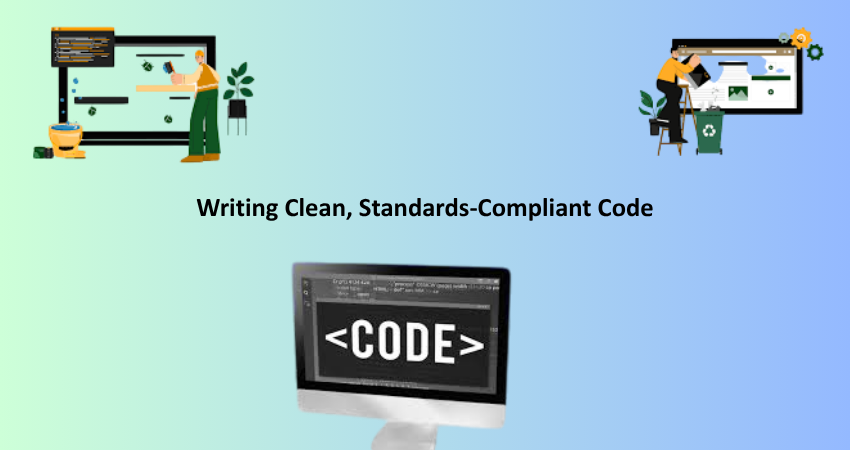
Introduction
The creation of a WordPress theme involves more than simply developing a lovely site. Your code has to comply with standard practices in order to ensure security, maintainability, and compatibility with WordPress. A poorly coded theme could lead to performance issues, security vulnerabilities, or incompatibility with future updates of WordPress or any of the other popular plugins. Therefore, while following the official coding guidelines provided by WordPress is a recommendation, it is a necessity. These guidelines are there to ensure that the theme will work efficiently in a variety of environments while also being developer-friendly, accessible, and future-proof.
These coding specifications will undoubtedly help you build up your reputation and enable you to raise the quality of your output, whether you are a freelance developer writing custom themes for clients, an agency professional, or intending to make a theme available in the WordPress repository or ThemeForest. In this article, we take a look at the major WordPress theme coding standards for you to follow. From template structure and usage of functions to security practices and file organization, it’s all here with a comprehensive roadmap on how to code professional-grade themes that meet WordPress standards and real-life expectations.
Structuring Your Theme Files the Right Way
Organizing Templates and Assets for Maintainability
A clear and logical file structure is one of the fundamental aspects of building a WordPress theme. WordPress expects files such as style.css, index.php, functions.php, and screenshot.png. The core files are important, but the organization of your templates and assets can make a real difference in maintainability and scalability of the theme. For instance, it is a good practice to store template parts in a separate folder, usually called /template-parts/, where you could put modular files like header.php and footer.php or reusable components such as post cards or navigation menus. This modularity means less code duplication and simplifies the management of updating some components throughout the theme.
Besides, all CSS, JavaScript files, images, and fonts should be put in their respective folders, i.e. /assets/css/, /assets/js/, and /assets/images/. That way, your root theme folder will remain neat, and it will also be much better when different people work in teams since they can now find and change styles or scripts without shuffling through really messy directories. Have versioning of any of your assets while enqueuing them to save possible caching on browsers. A theme file in this well-organized structure becomes more comfortable to document, less error-prone, and easier for someone else who may need to maintain your theme or extend it at some future date will have a better onboarding experience.
Using Template Hierarchy Correctly
Grasping and utilizing WordPress’s template hierarchy is crucial if you are to develop dynamic and multi-faceted themes. A hierarchy is a system used to determine the theme file that WordPress should use to present a specific type of content. For instance, if the user visits a category archive, WordPress will first look for category-slug.php, then category.php, and last of all archive.php before falling over to index.php. This whole scheme gives the opportunity for programmers to develop specialized experiences according to different types of content without recoding blocks of code extensively.
Using the hierarchy has the following general application: create a custom template only when you have to and when you think it is justified, otherwise use the default files. In fact, hail custom templates, and you end up with bloated templates. Use them little, and you compromise the user experience. The thumb rule would be to use default templates (archive.php, single.php, page.php) in common use cases and create custom ones (single-product.php, category-news.php) wherever the design or functionality greatly deviates. Also, make sure that your template files are well-documented using PHP comments. This way, any developer in the future, including yourself, can quickly understand what each file is for and its logic. Proper implementation of the hierarchy guarantees a predictable and extensible behavior for your theme.
Writing Clean, Standards-Compliant Code

Following PHP Coding Standards
It is established that WordPress coding standards for PHP are concise rules in which any theme as well as plugin authors must write their codes for maintenance of integrity across themes and plugins. When properly adhered, the coding becomes even simpler to read, debug, and collaborate. Every element has defined standards in their coding as far as indentation, spacing, naming conventions, and control structures are concerned. For instance, one is supposed to use four spaces for indentation instead of tabs, and opening and closing PHP tags should be made properly. Function names and variable names are snake_case (my_custom_function), while classes use PascalCase (My_Custom_Class). Indeed, they seem extremely minor, but they yield consistent, professional code suitable for the WordPress ecosystem at large.
Meaningful variable names and avoidance of a deep nesting level are also a good way to ensure code clarity. Standard shorthand PHP tags like ‘ ‘ should not be used; instead, full opening tags (<?php) should be attempted for maximum server compatibility. Another utmost important factor is data validation and sanitization, especially when it comes to user input. WordPress comes with a special set of functions to secure the data and keep the output clean: sanitize_text_field(), esc_html(), and wp_kses_post(). You could also implement PHPCS (PHP CodeSniffer) with the WordPress Coding Standards ruleset for the automatic enforcement of clean code. Clean PHP coding is not only cosmetic; it is the foundation for stable and secure themes.
Best Practices for HTML, CSS, and JavaScript
A WordPress theme, apart from PHP, develops into other languages at the front end. The HTML should be semantic and accessible. Use proper tags such as <article>, <section>, <nav>, and <aside>. Every page should include headings in the proper hierarchal order: from <h1> to <h6>. Images must all include alt text and other links should use descriptive text that screen readers will read. All this is not only for accessibility: it also helps in improving SEO and usability. Kicking of clean and descriptive mark-up, search engines and assistive technologies interpret the contents better.
Your programming style must follow CSS conventions regarding Blocks, Elements, and Modifiers (BEM). Avoid using unnecessary IDs or overly specific selectors. Keep styles in separate files, especially in big projects, and use wp_enqueue_style() to add them to the header rather than hard-coding CSS. Inline scripts are also a no-no for JavaScript, so you should utilize wp_enqueue_script() for correct loading. Always use vanilla JavaScript, and sometimes jQuery—only when necessary for your theme or plugin. Make your scripts modular and concise. Wherever possible, load non-essential scripts in a deferred manner to enhance load times. Clean and standard-compliant code leads to faster, accessible, and more reliable sites.
Ensuring Compatibility and Accessibility
Making Your Theme Translation Ready
Support for a global audience is what project WordPress is. Therefore, one necessary aspect in preparing a theme for localization is the writing of PHP code in a translatable manner. Therefore, one must use the Internationalization (i18n) functions provided with WordPress: __(), _e() and esc_html__() and refrain from hardcoding text strings. Simply put, rather than writing echo “Read More”;, you would write echo esc_html__( ‘Read More’, ‘your-theme-textdomain’ );. This will allow the strings to be overridden by the PO/MO files when the translations take place for another language, hence making your theme multilingual-ready.
In order to accomplish this , maintain a domain object in relation to your theme directory name. You then properly load your text domain in your functions.php file via use of load_theme_textdomain(). Lastly, have a correct header in your style.css file, and observe all the other requirements posed by the WordPress theme check so that your theme would not be prematurely disqualified from the repository. We acknowledge that even if you don’t have any intention of putting it into the WordPress repository, making it translation-ready will be a huge long-term advantage to clients and users across the globe. This also goes a long way toward achieving accessibility and inclusivity, allowing diverse audiences to access your site in the language of their choice. Having a translation-ready theme will be an improvement in quality and usability.
Adhering to Web Accessibility Standards
Accessility is a salient aspect of current website designs, and WordPress mandates that all themes follow WCAG guidelines. However, to be accessible, that theme would mean that users with disabilities would be able to navigate, read, and interact with your site normally. The first thing you have to do is use semantic HTML, which will help assistive technologies properly parse the meaning of your content. Buttons should be properly labeled, form fields must contain paired <label> tags, and ARIA (Accessible Rich Internet Applications) roles should be applied where appropriate.
It is another one of the moves to make keyboard usage easier. They can use a keyboard to navigate through the menus, buttons, and links that should be interactive, with proper focus states. Ensure that there is a, at least, WCAG AA-level contrast between text and background for this information. Do not use color alone to show differences—encourage the use of text label or icons. Use tools such as Lighthouse or WAVE, or screen readers such as NVDA or VoiceOver, to test your theme. Accessibility is sometimes viewed as a set of compliance rules; however, it is much more about empathy and inclusive experiences. Adhere to all access-guiding principles, and you will build themes that serve all users or audiences, not just those who have or can afford to buy them; you will improve SEO and future-proof your theme.
Securing and Optimizing Your Theme

Writing Secure and Safe Code
WordPress theme development should put security first. While the bulk of security is concerned with plugins and the core of WordPress, if not coded correctly, security flaws can also be exposed in themes. Data should always be validated and sanitized before it is saved or displayed. For example, never trust user input—use functions such as sanitize_text_field() for text fields or esc_url() for URLs. Escaping output is just as important: when outputting user data into HTML, use esc_html(), and when limited HTML input is allowed, use wp_kses().
Stay away from eval(), raw SQL queries, or unsanitized global variables—lead-swinging is not the way to go about it— instead, use WordPress APIs or methods. For example, for security purposes, utilize wp_nonce_field() and check_admin_referer(). Also, observe the principle of least privilege; if a feature doesn’t require admin capabilities, avoid it. Following proper security ensures that themes safeguard user data against being blacklisted by security instruments or removed from directories. Theme reviewers will reject codes with insecure practices, while users will become untrusting with your product. Following secure coding practices ensures that your theme is safe, professional, and reliable.
Optimizing Performance for Speed
When considering the performance of a theme, user experience and search engine optimization really come into play, thus your theme must ensure a quick loading time and smooth operation. Start with anything that can reduce HTTP requests. Combine CSS files where possible and avoid external fonts and libraries where possible. Enqueue scripts and styles properly and load them conditionally. Only enqueue files that are needed for particular pages. For scripts that are non-critical, use async or defer, so they do not block rendering.
Images are another large hurdle on the performance aspect. Use the correct sizes for your images, compressing assets in tools like TinyPNG or ImageOptim. Use responsive images with srcset, avoiding the embedding of large media files in templates. Clean your theme by removing unwanted style or unused template files. Spot the snares that slow down your theme performance and load time by testing them for performance with GTmetrix, Google PageSpeed Insights, or Lighthouse. Ultimately, fast themes keep bounce rates down by having an increase in satisfaction amongst users, which will be given a large weighting to SEO ranking. When it comes to performance, optimize your theme-they are not just something that looks like it works: they are true beasts in functionality.
Conclusion
It is quality coding, attention to detail, and required knowledge deep embedded in the WordPress standards that define a professional WordPress theme rather than mere aesthetic considerations. The official theme coding guide states that file structure, clean and accessible code, protection of scripts, and optimizing performance must be set up in the best practices to ensure that your theme does not merely function but becomes sustainable and scalable. Compliance with these best practices leads to a better product, diminished technical debt, and the laying of trust among users and collaborators.
These principles will keep your aim intact, whether it is for a private project, a client solution, or contributions to the WordPress open-source community. Thus, as WordPress keeps evolving, any themes that codify these standards will be ageless, will be able to adapt to future updates, and will offer the best user experience possible. Put your investment in learning and conforming to these principles today, and you would build faster, safer, and easier-to-maintain themes that would prove far more successful in the long-term.